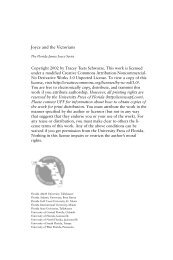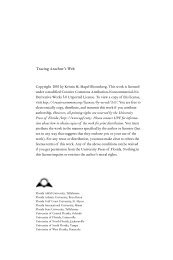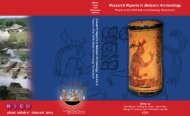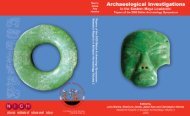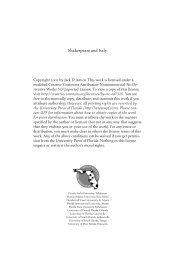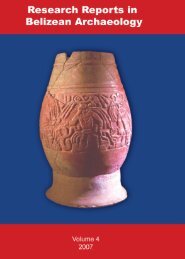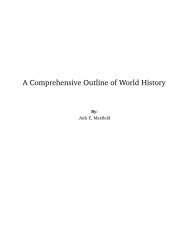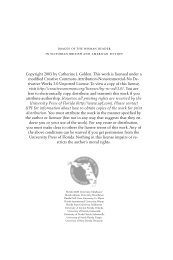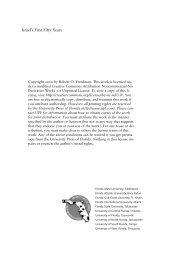Bernard Shaw's Remarkable Religion: A Faith That Fits the Facts
Bernard Shaw's Remarkable Religion: A Faith That Fits the Facts
Bernard Shaw's Remarkable Religion: A Faith That Fits the Facts
You also want an ePaper? Increase the reach of your titles
YUMPU automatically turns print PDFs into web optimized ePapers that Google loves.
190 <strong>Bernard</strong> Shaw’s <strong>Remarkable</strong> <strong>Religion</strong><br />
<strong>the</strong> <strong>the</strong>ologians, on whom <strong>the</strong> scientists look down with more or less tolerant<br />
condescension. Not surprisingly, Popper’s notion has been absorbed<br />
into <strong>the</strong> orthodoxy of science and is incorporated into <strong>the</strong> image many<br />
scientists have of what <strong>the</strong>y do. It is cited in this way, for instance, by<br />
Stephen Hawking in his popular book A Brief History of Time (10). So<br />
while Popper attacked <strong>the</strong> intellectual arrogance of Logical Positivism, he<br />
flattered <strong>the</strong> scientists by portraying science as ruthlessly skeptical. After<br />
all, it was philosophers, not scientists, who had insisted that science produced<br />
a body of certain fact. And Popper makes explicit what is implied by<br />
Shaw’s view of what science should be.<br />
Thomas Kuhn<br />
Then came Thomas Kuhn, a historian as well as a philosopher of science, to<br />
point out that this is not <strong>the</strong> way science actually works. It could not work,<br />
in fact, because falsification is far more difficult than <strong>the</strong> <strong>the</strong>ory implies.<br />
The reason is suggested by <strong>the</strong> old proverb “The exception proves <strong>the</strong><br />
rule.” The sense of “proves” is “tests” (as in “proving ground”), and <strong>the</strong><br />
meaning of <strong>the</strong> saying is that every rule is tested by apparent exceptions.<br />
Galileo’s rule that light and heavy objects fall at <strong>the</strong> same rate is not falsified<br />
by <strong>the</strong> fact that under normal circumstances a fea<strong>the</strong>r and a brick do<br />
not fall at <strong>the</strong> same rate. Air pressure affects <strong>the</strong> objects differently, so <strong>the</strong><br />
rule becomes manifest (with those particular objects) only in a vacuum.<br />
The trouble is that in nature many different factors influence <strong>the</strong> course of<br />
events, and one can never be certain, no matter how rigorously controlled<br />
<strong>the</strong> experiment may be, that all “hidden” factors have been eliminated. If a<br />
single counterinstance were always fatal to a scientific <strong>the</strong>ory, science<br />
would get nowhere.<br />
Science actually moves in a way sharply different from <strong>the</strong> orthodox<br />
myth of scientific progress. Science is historically a dialectical process in<br />
which periods of “normal science” are punctuated by “revolutions.” The<br />
accepted myths about scientific thinking come closest to being realized<br />
during <strong>the</strong> revolutions, but normal science, which is what most scientists<br />
do most of <strong>the</strong> time, is entirely different. This historical rhythm is controlled<br />
by “paradigms,” models of <strong>the</strong> natural world, or aspects of it, that<br />
serve as a kind of archetype on which scientific investigation is based.<br />
“Paradigm” is somewhat loosely defined and is used to represent both <strong>the</strong><br />
fundamental assumptions that are shared by nearly all scientists and <strong>the</strong><br />
more narrowly applicable models appealed to by specialists. They are



